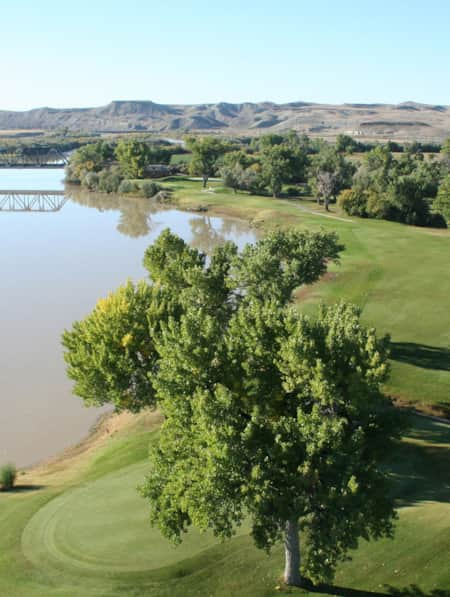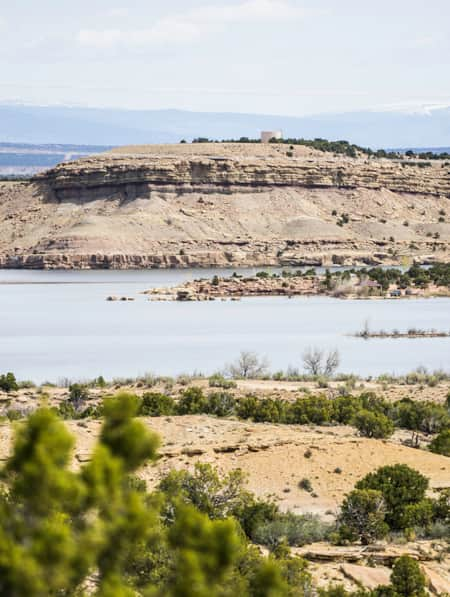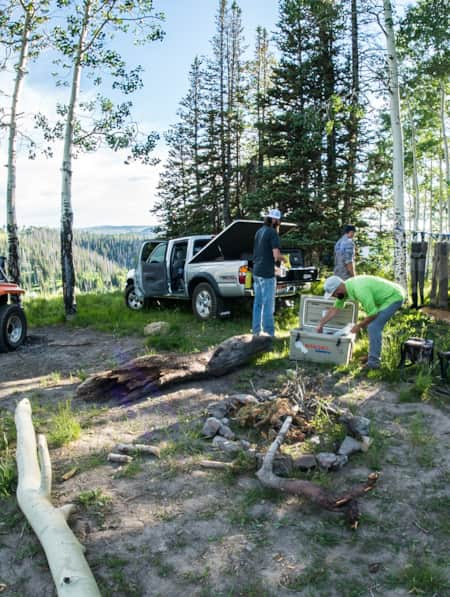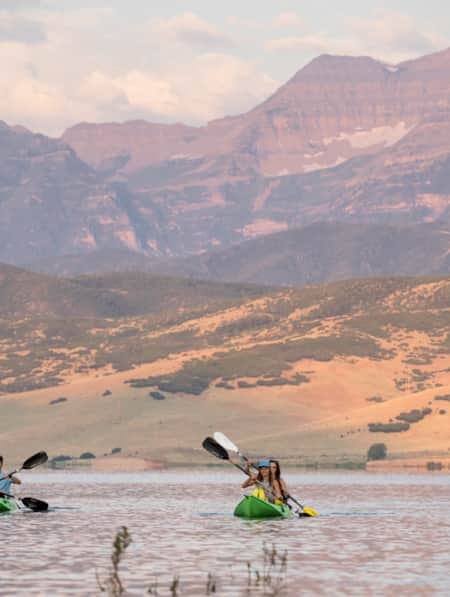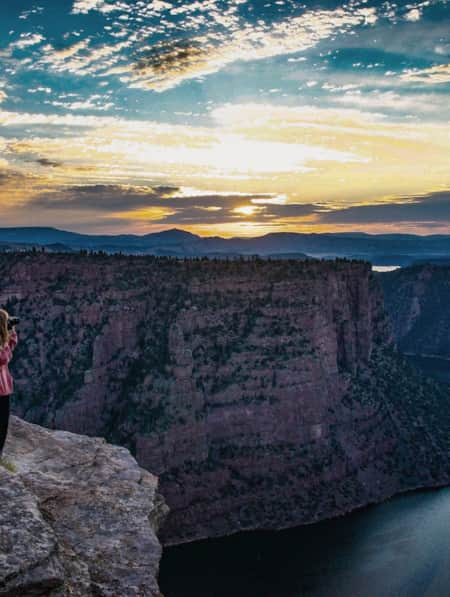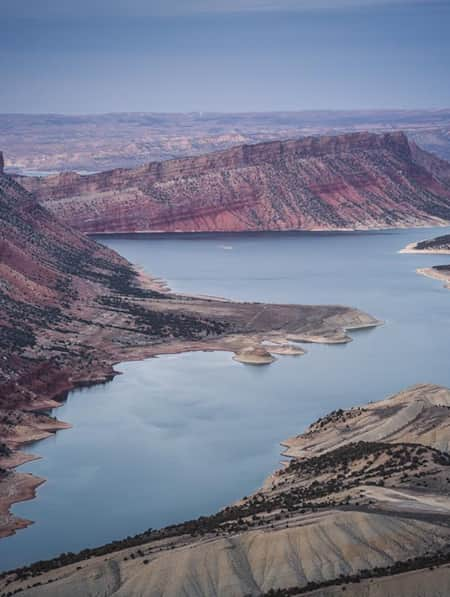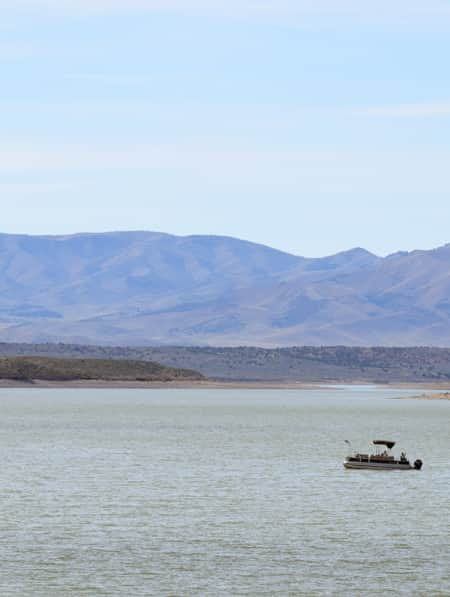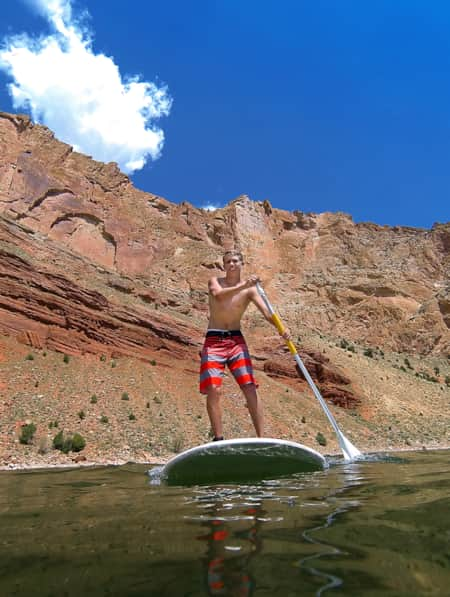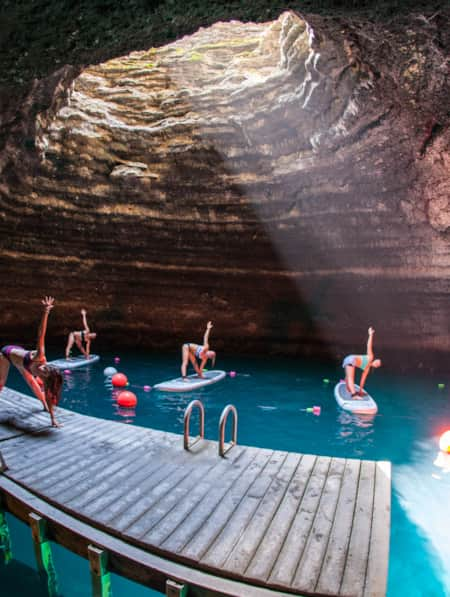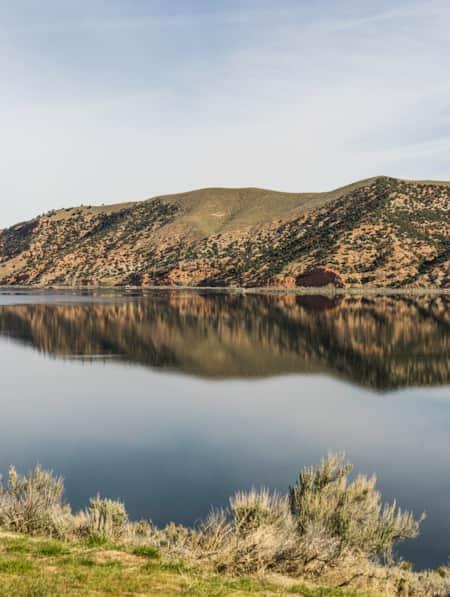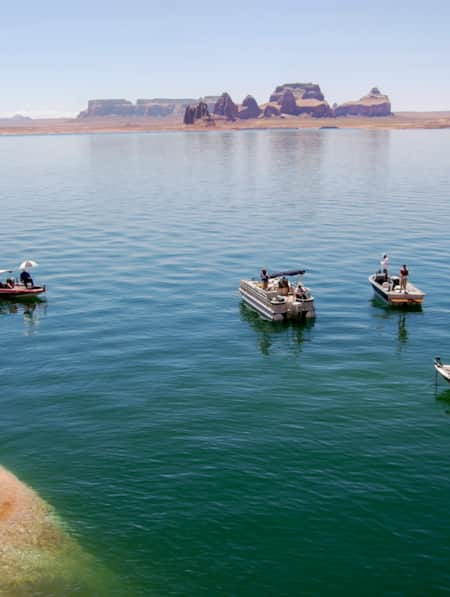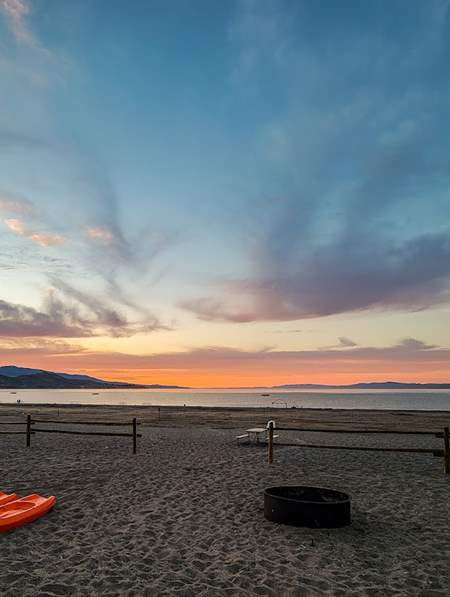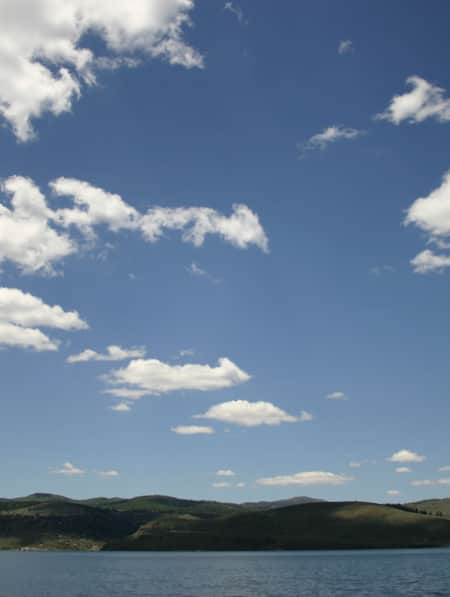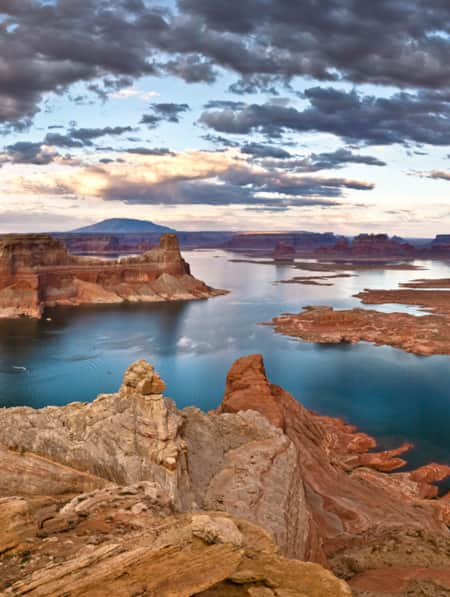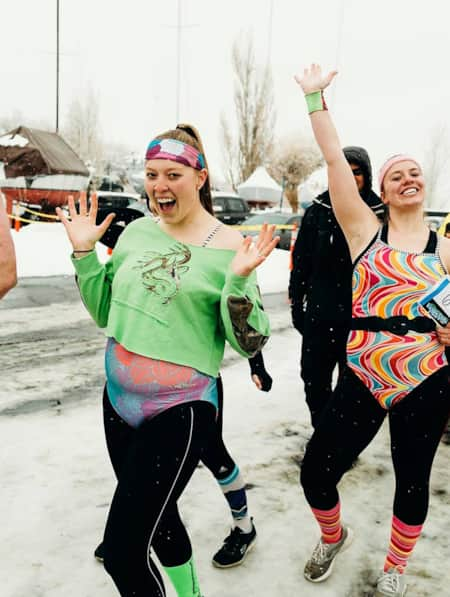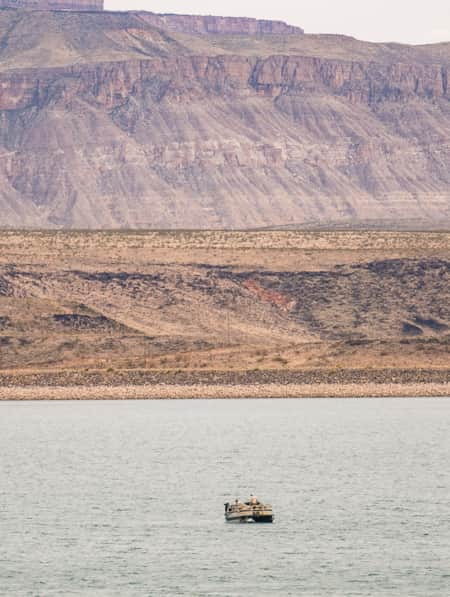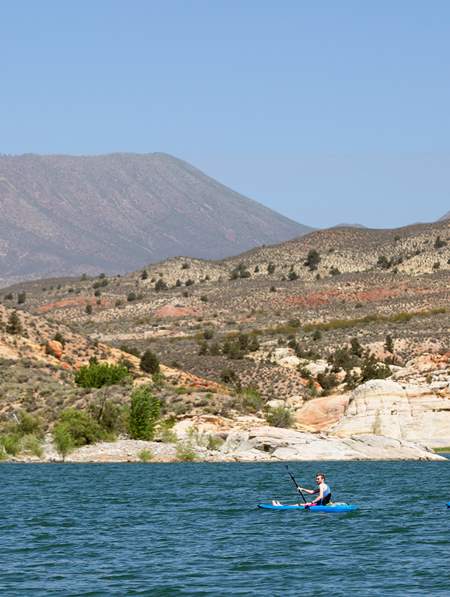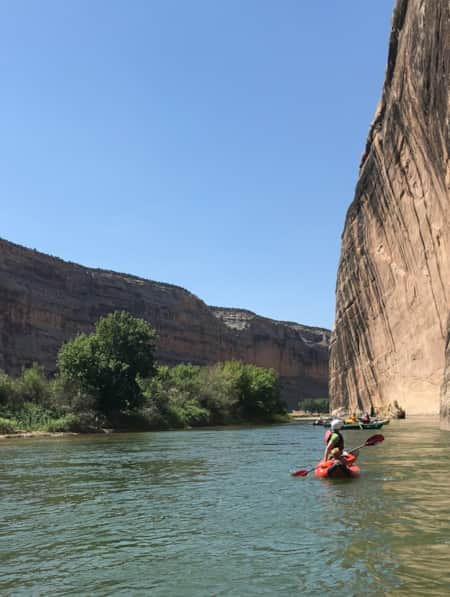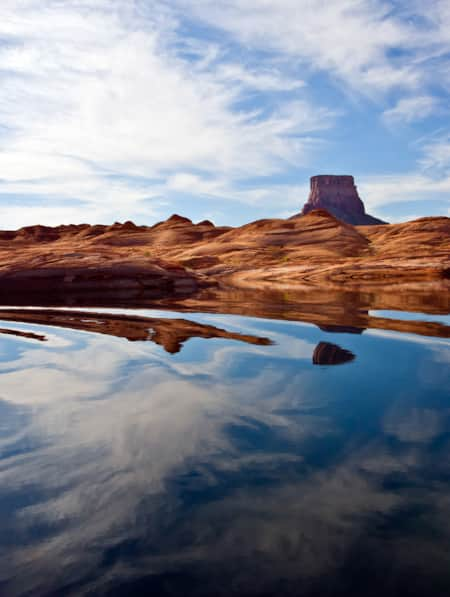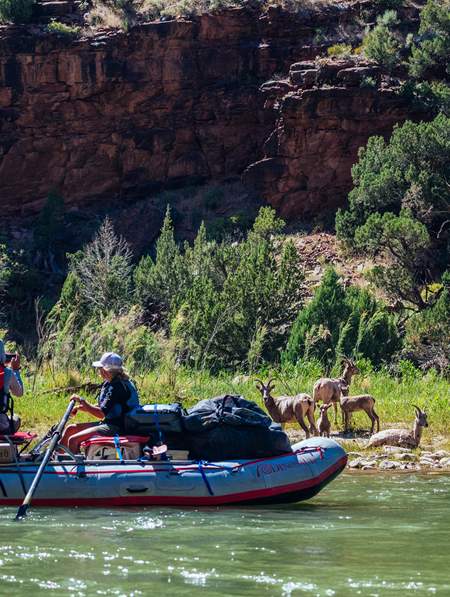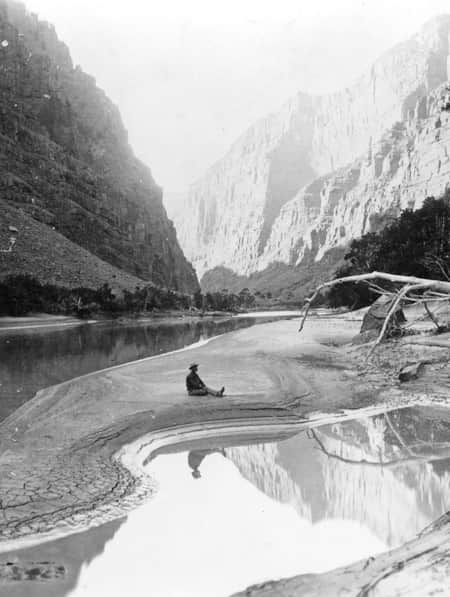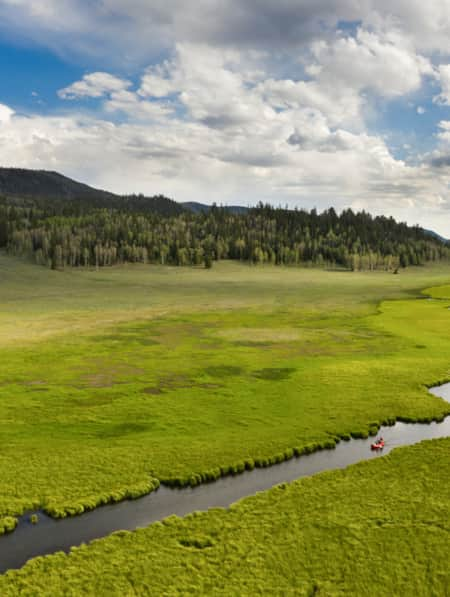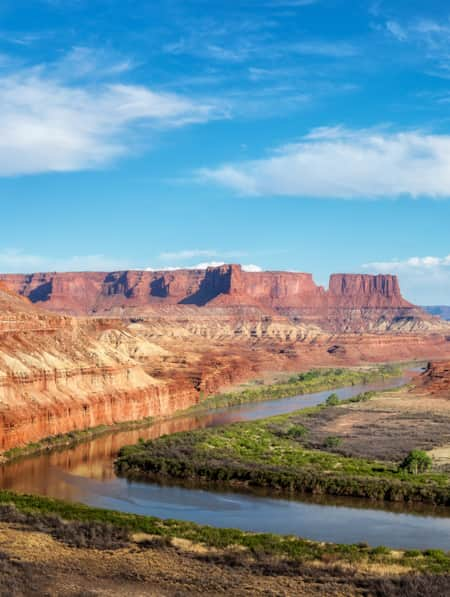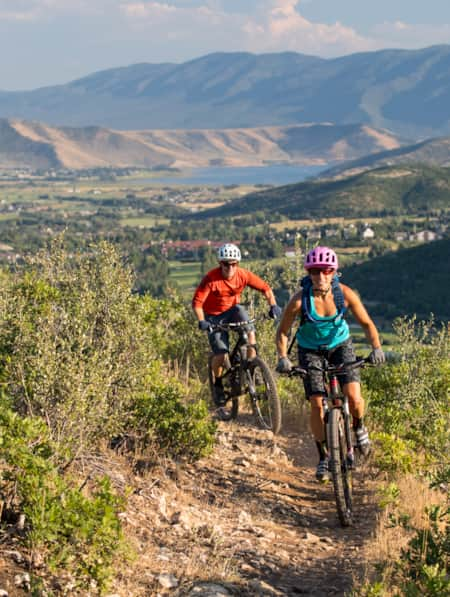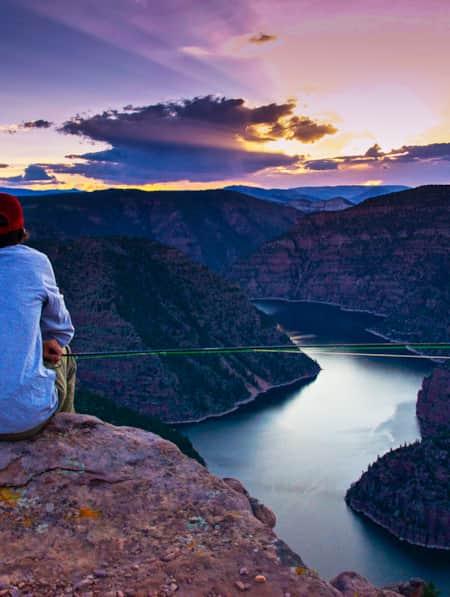Lost and Found in Desolation Canyon
Fully unplug on a return trip down the Green River through the remote Desolation Canyon. Along the way, read as the author navigates a few friends through tricky rapids and pauses on stillwater and at night to appreciate the beauty, stillness and solitude of desert wilderness. It's a 100-mile journey for dedicated adventurers, but it comes with real healing power.
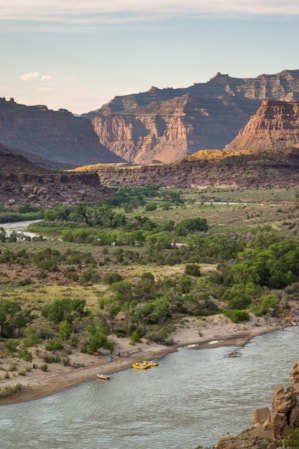
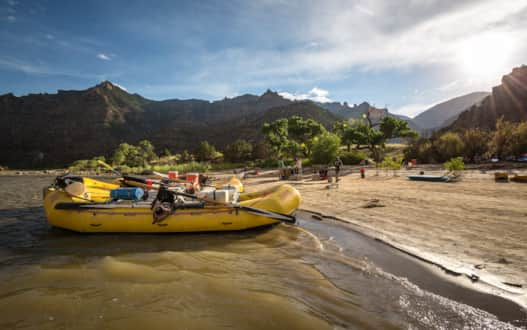
Photo: Whit Richardson
After a few days in Desolation Canyon (aka “Deso”) the passing river’s current fights off insomnia and takes my thoughts and concerns straight to la la land. I sleep through the night in my little tent beneath cottonwood trees, towering cliffs and my own private swath of sky full of stars.
A year earlier, I connected with some people who seemed to share my desire for exploration and adventure. Scott, Tiffin, Dan, Rachel and Rachael. I’d tantalized their senses with stories of this place and seasoned their willingness to push off onto the river for an extended, multi-day journey where serpentine canyons unveil new views and sensory experiences around every bend.
My stories took hold and were enough to create the trust they needed to know that I could successfully and safely take them downstream for nearly 100 miles and through more than 60 rapids.
I couldn’t help but ask myself, “Should they trust you?”
I had run this same stretch of river four times before and they all knew I wasn’t a licensed river guide, but they trusted me. They were all willing adventurers. We were ready for whatever lay ahead. If only nature herself could be trusted to cooperate.
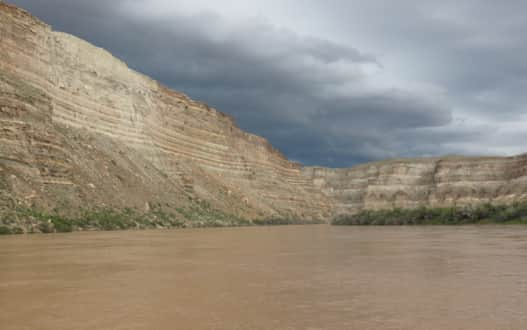
Photo: Ben Dodds
Volatile Nature
At the put-in at Sand Wash, the river ranger, Mick, made sure we had all the necessary supplies and gauged our boating experience. He recognized me from previous years and we laughed about being seduced by the river enough for an annual visit. He commented how everyone he meets is in a good mood on launch day. We were all in a great mood, even with Mick’s precautions: be careful about where we ate, as several black bears had been sighted in recent weeks; clean up our camps so it would be a pristine experience for the next boaters; and be ready for a possible thunderstorm sometime around noon — weather reports indicated a 30 percent chance.
And with that we pushed off. The morning couldn’t have been more beautiful. The moment we started down the river, we began to disconnect from the world of convenience, things, schedules and obligations. It created a rare sense of freedom. That is why we were here.
For all the rafting newbies, the first day is 20 miles of flatwater before the entrance to Desolation Canyon proper, where the rapids begin. This stretch is their chance to take the oars and see what it feels like to maneuver an 18-foot boat fully weighted with five days worth of food, drink and gear for six people. The group took their turns rotating between taking the oars, being blissful passengers and manning the ducky (inflatable kayak).
We noticed the clear, blue sky gradually fill with white, puffy clouds, which turned to gray clouds and then in the distance an ominous, dark sky appeared. I hoped whatever lay beneath that gloom would pass before we were beneath it.
In a matter of seconds, the stillness turned to windy. We floated by a beach where there were several rafts and a large group of people. Their towels flapped in the gusts and someone shouted a warning to us about being blown into a rapid.
"My friends had confidence that I would guide them down the river, just as I had confidence in this wild place."
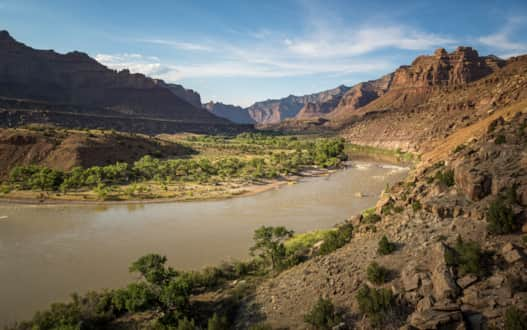
Photo: Whit Richardson
Windy turned to hurricane-like; I could barely sit upright. Lightning flashed and deafening bangs sounded in the same moment. I wanted to get our boat anchored to something and I noticed a boulder rising out of a lazy bend on the left bank. With all of my strength, I oared toward it. It seemed a safe enough place to lodge the raft until the weather passed. Daniel jumped in and pulled the boat further toward the shallows while I continued oaring.
Then came the hail. I put my life jacket over my head to protect it from the onslaught of lemon-sized chunks of ice. Someone wailed in tears. I looked down at my sandal-exposed toes and saw they were encased in several inches of ice. Rachael laughed sadistically, and I appreciated it. There was something thrilling about how suddenly the day had transformed. I could see Scott and Tiffin crouched beneath the ducky, crammed into the shoreline vegetation of tamarisk. Their shouting was indiscernible due to the storm’s cacophony.
And just as quickly as it all began, it was over. We compared our bruised bodies. Everyone was okay. The sun returned. Our collective blood pressure receded but we moved downstream only as far as the next beach large enough to camp on.
On solid ground, Dan and Rachel had first turn at dinner. We made peace with the events of the day over their chicken enchiladas.
Desolation Canyon Whitewater
Each morning on the river, when the sun just peaks over the canyon and begins to bathe it with its light, I like to take 30 minutes to sit and absorb the sights and sounds of my new surroundings. It’s magical. I reflect on yesterday, think about the day to come and lose myself in the beauty, stillness and solitude of desert wilderness.
I consulted my river map and considered that we’d floated about 15 miles the previous day. Our last day concludes a few miles north of the town of Green River at Swasey’s Boat Ramp, which meant we had 68 miles to finish our journey. So, we’d need to float at least 17 miles per day to stay on schedule. Considering that the current is much swifter after entering Desolation Canyon, it wouldn’t be a problem to accomplish that. Most importantly, we’d soon be hitting at least one rapid per mile for the rest of the trip. The fun was just about to begin.
With that in mind, we broke down camp, rigged our boat and pushed off for whatever the day had in store for us.
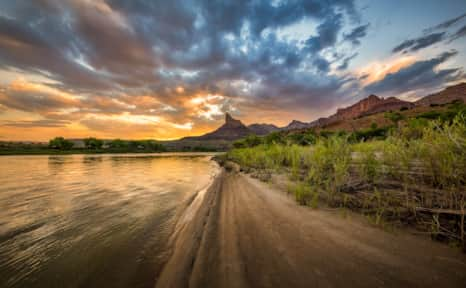
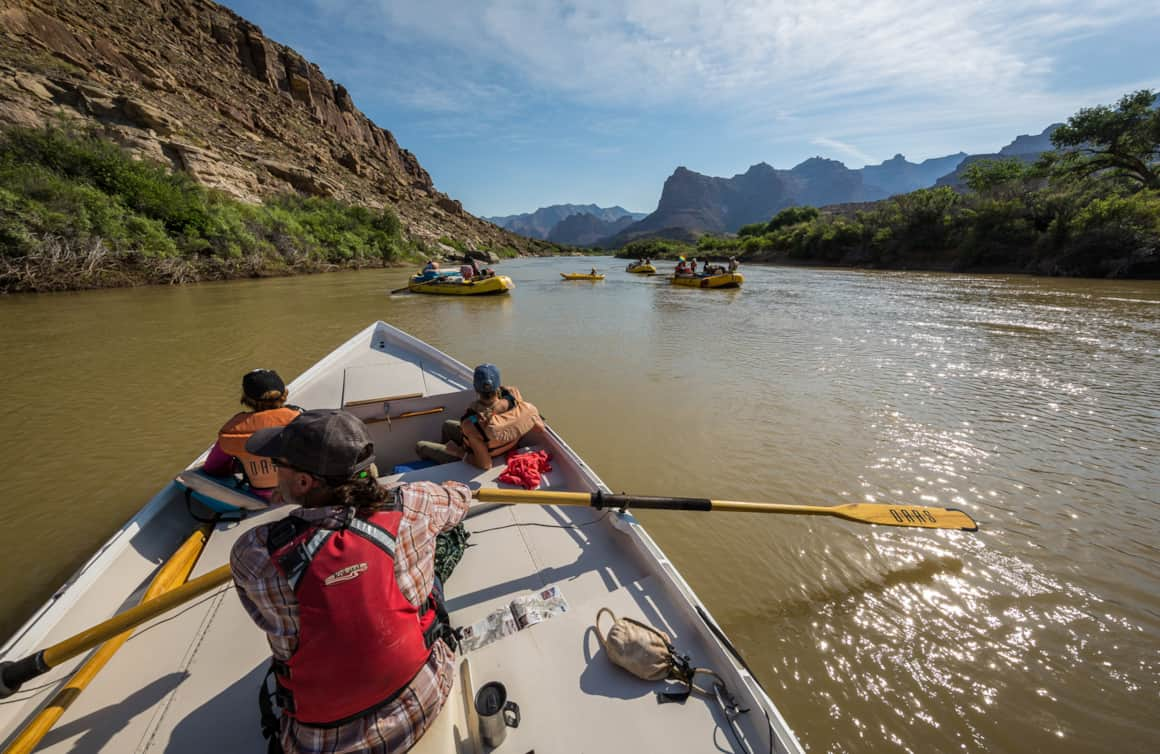
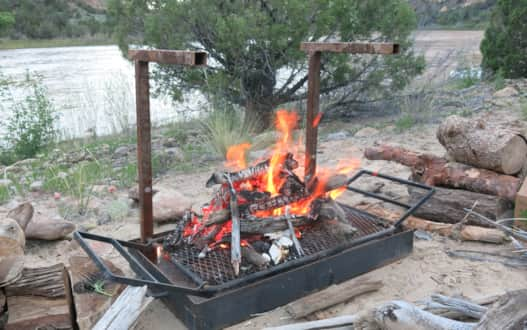
Photo: Ben Dodds
We were near the mouth of Desolation Canyon, which is marked by soaring cliff walls, considerably taller and narrower than yesterday’s. It conjured the Southern Oracle from “The Neverending Story,” which, as the story goes, may only be passed by those confident of their self-worth (or who can simply outrun their lasers like Atreyu).
Within a few minutes, the distant churning of whitewater sounded.
We entered the Rock House Rapid. It’s a fun, splashy wave train that goes on for a quarter of a mile or so. Scott and Tiffin hit their first wave, the nose of the ducky rose up and they disappeared over it. I kept my eye on them and scanned the river for any upcoming objects to avoid.
Spirits were high. Blue skies and sunshine defined the rest of the trip. By that point, the current was swift enough that, aside from steering, paddling was unnecessary, which allowed me to just sit back and take in the grandeur surrounding us. I spied an arch on the top left side of the canyon and pointed it out to the group. On the current, everyone had their cameras ready to document the fleeting landscapes of a world passing by.
We saw desert bighorn sheep, wild horses, colorful birds and an elk bounding through a meadow. On our hike to a petroglyph panel, I saw a large rattlesnake. It wanted nothing to do with us and quickly slithered away. I was on the lookout for a bear, though personally I have only ever seen bear prints in Utah.
By day’s end, we’d tackled Jack Creek, Big Canyon, Firewater Canyon and Cedar Ridge rapids, and found a good place to camp. It was a sandy island full of cottonwood trees just before Flat Canyon Rapid. After a long day of whitewater rafting, putting on dry socks and standing on solid ground is a treat. Here, we can appreciate the quiet and solitude of one of the most remote places in the continental United States.
As the sun set, distant clouds thrust horizontal lightning flashes over the silhouettes of the towering Book Cliffs. Moments later, thunder rumbled through the canyon, echoing off the cliff walls. The stars overhead began to fill the sky, starting out as dim pinpoints and with the increasing darkness, to a cosmic, blazing sea of light, traversed by satellites, the Milky Way clearly visible. All of these sights were accompanied by the music of endlessly flowing water. With the cooling temperatures, I put on my jacket and enjoyed the display for a little while longer until my eyes grew heavy. Then I retreated to my tent and closed them while the gentle caress of nature’s lullaby sung me to sleep.
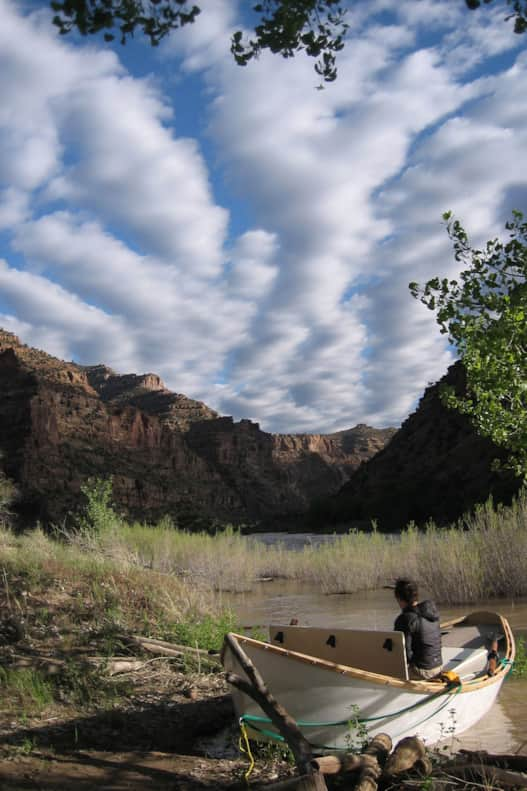
Photo: Scott Jones
Scouting the Rapids
On a previous visit through this stretch of Deso, I experienced one of the most surreal views of my life. When I awoke, I unzipped my tent, looked out over the canyon and saw the clouds filling the sky in a mystical pattern that brought Salvador Dali’s paintings to mind. They appeared to mimic the serpentine shape of the canyon itself in four separate bands that vanished behind the canyon walls, as if the canyon itself possesses power to affect the shape of the clouds. Maybe it does. For several minutes, I gazed at them and then decided to wake the group and suggest they take a look.
This was going to be a big couple of days. The first would present us with an average of two rapids per mile for 19 miles. One of them flipped John Wesley Powell’s boat in July 1869, during his historic river journey when he mapped the Green River to the Colorado River and all the way through the Grand Canyon. In addition, we’d pass by places that marked stories involving the notorious cowboy associate of Butch Cassidy, Joe Walker, who was murdered here by a posse in May 1898. We’d see a ranch that was homesteaded at Rock Creek. We’d even visit Native American pictograph and petroglyph panels that whisper life’s story here from a thousand years before.
I was filled with anticipation the next day because I knew we would soon be upon the biggest rapids of our trip. Moonwater Rapid, a class II, was visible just downstream from our camp. But beyond the “frown” in the water ahead, it wouldn’t present a challenge. (The frown indicates water is streaming around something just beneath the surface, and you always want to avoid them. True in life and on the river.)
Within the next mile and a half, two rapids followed. The first, Joe Hutch Creek Rapid, was a class II+ to III-. It’s usually a fairly easy “read and run” rapid, however, at lower flows it can involve some boulder dodging.
The next rapid, Joe Hutch Canyon Rapid (formerly Cow Swim), was the most serious rapid of the trip. I’m pretty familiar with it and I consider it a truly exhilarating ride. It has a cauldron of irregular waves on either side of a big wave train that can be accessed from river left down the “tongue,” which is where the main current forms a V-shape. I insisted that we pull off on river right several hundred yards before the rapid and scout it to determine our best route through it.
We landed our boats, tied them down and followed a path downstream for a quarter-mile to an open area adjacent the rapid. There were lots of other boaters there, perhaps a dozen or more.
Joe Hutch Canyon Rapid makes a fierce display, visually and sonically, and many people there looked understandably worried. My adrenaline was flowing high, but as in previous years, I could see the tongue flowing over a steep drop and straight into a series of tall, purely lateral waves, the biggest of this rapid. It can be intimidating to think that’s the best way through, but with careful observation, you can see that the smaller waves to the left and right are a disorganized mess of chaotic waves crashing into each other from the front, left, right and filled with big swirling eddies, or “holes,” that could easily trap and flip a raft.
As I discussed this with my group and some of the other boaters, we watched a blue raft piloted by a man and a woman approaching the rapid. They seemed to be coming down the tongue toward the wave train, but then drifted right, and directly into the intersection of two large waves pounding each other from opposite directions and it flipped their boat over like a plaything. People gasped and we watched as the couple floated through the violence trying to stay with their upside down boat. They floated through to the rapids’ end and pushed their boat toward the beach on river right, where folks on the shore assisted them.
It was not reassuring.
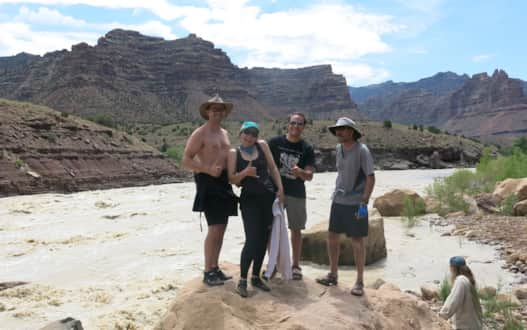
Photo: Ben Dodds
But I mentioned to the group that I’d run this rapid several times before without a problem. I decided it was time to go. A couple from New Mexico asked me if I would mind if they followed me through. It turned out to be two other boats following. I wondered if I really deserved all these people’s trust. It wasn’t the time for doubts.
We pushed off the bank and I started rowing against the current to the left bank with all of my strength. Immediately before the rapid, the river banks left and the tongue follows its bend. You can only access the correct position from that side. As I oared, the two other rafts followed behind. Everyone seemed to be lining up perfectly behind me. I made it to the left bank, now surging with adrenaline-infused focus, and turned downstream.
I rounded the corner, the tongue was straight ahead, and I oared directly toward its center. We floated over the drop and everyone shouted exactly the same way people do dropping into a roller coaster. We had the perfect line into the six-to-eight foot tall wave and right over it, and then a series of five or six more waves worthy of hooting and hollering for. The two other rafts followed without incident and we all gathered after the rapid to congratulate each other.
After a break to explore the abandoned McPherson Ranch, we continued downstream through Florence Creek Rapid and, after scouting, Wire Fence Rapid.
We were soon entering Gray Canyon. The scenery changed very suddenly from towering red cliffs reaching pine covered, pyramid-shaped summits to much more sparsely vegetated, lower cliff walls of gray, yellow and white. The view of the sky opened up greatly.
Learning to Trust
In Gray Canyon, we left Coal Creek Rapid soaked and stoked. We got flipped around backwards, and then straightened her out. Now it was Dan’s turn to take the oars for a stretch.
Rattlesnake Rapid was next, and from previous experience, I decided that I would need to return to the oars. The river makes a hard left, almost 90 degrees, and the current pushes fiercely toward the right riverbank where there’s a boulder that could easily flip a boat. I’ve found that the best approach is to start just left of center. Then, as the river bends, begin oaring hard toward the left. Even when you’re trying hard, the river typically still pushes you closer to the big boulder on the right than you’d like. (The river offers up many metaphors for life.)
That day was no exception. The rear of our raft actually grazed the boulder as we went by. The biggest concern there is that the river’s current pushes directly into the boulder causing large, powerful waves making it very easy to imagine how things could go terribly wrong. Our line was a little too close for comfort but we passed it by. I released another breath of relief and we continued through the rest of the wave train. My friends had confidence that I would guide them down the river, just as I had confidence in this wild place. I trusted nature would challenge me. I trusted that it wouldn’t be easy. But I came prepared. I had experience. I trusted myself.
"Even when you’re trying hard, the river typically still pushes you closer to the big boulder on the right than you’d like. (The river offers up many metaphors for life.)"
A little over a mile downstream, we landed our boat at the Nefertiti boat access to make our last camp. Swasey’s Boat Ramp, where we’d end our trip, was just over eight miles downstream. Nefertiti is a boat access because people can drive a bumpy, dirt road from Swasey’s to do day floats, which is known as the Green River Daily.
This beach had sweet amenities, such as a pit toilet, a fire ring and my absolute favorite cottonwood tree. But our adventure was nearing its bittersweet end. We would soon be returning to our daily lives, but maybe with a little better perspective. These adventures are an absolute blast, but they’re more than just for fun. They are a little reminder that there are places like the Green River, and just knowing that the healing power of Utah’s hidden gems are here to be explored is reassuring.
As it was our last night on the river — tomorrow’s eight miles and six rapids would go by all too quickly — we made a fire and enjoyed an especially late night. Some people who were camped close by introduced themselves and we welcomed them to join us. The group were long-time friends from Washington, D.C., who’d planned their adventure specifically to re-connect away from the noisy city. As the night wore on, we took turns singing whatever ridiculous song came to mind. The fire crackled on, unapologetically bad singing echoed in the canyon, part of a human soundscape of laughter and banter among friends and new friends made in this special place, beneath massive cottonwood trees held in the palm of an isolated desert canyon.
I was acutely aware we were all bonded by something innately and importantly human — trust, conviviality — which places like this remind us of and help us to remember that life is so special.

